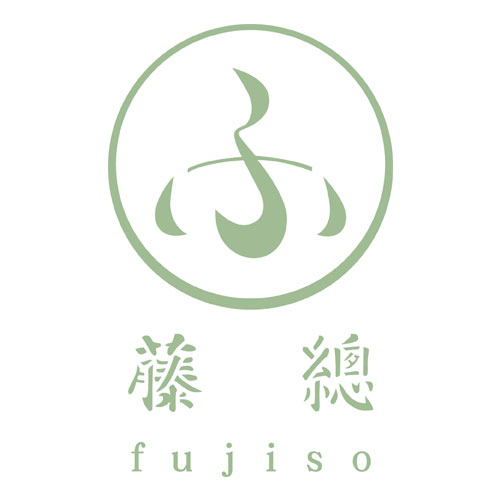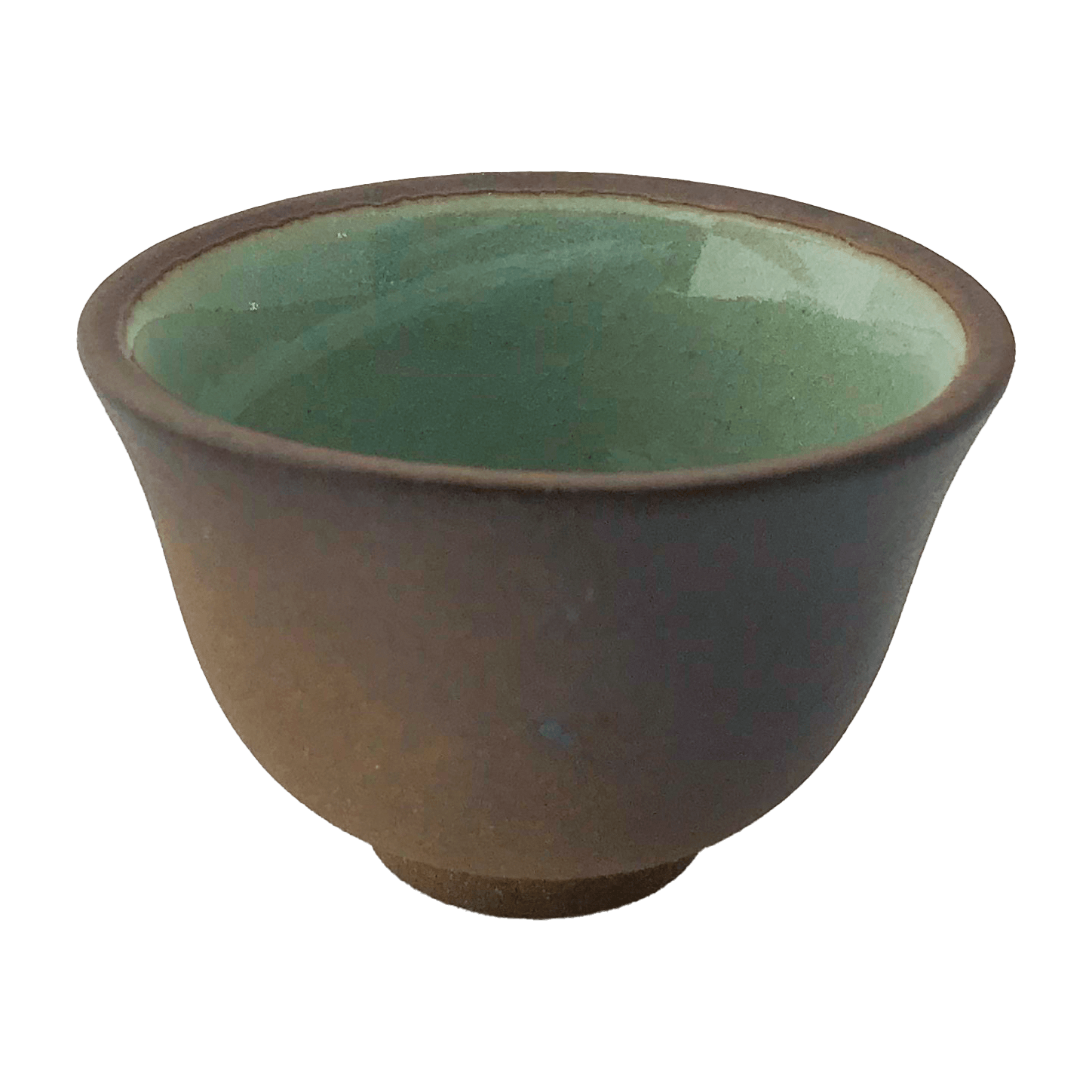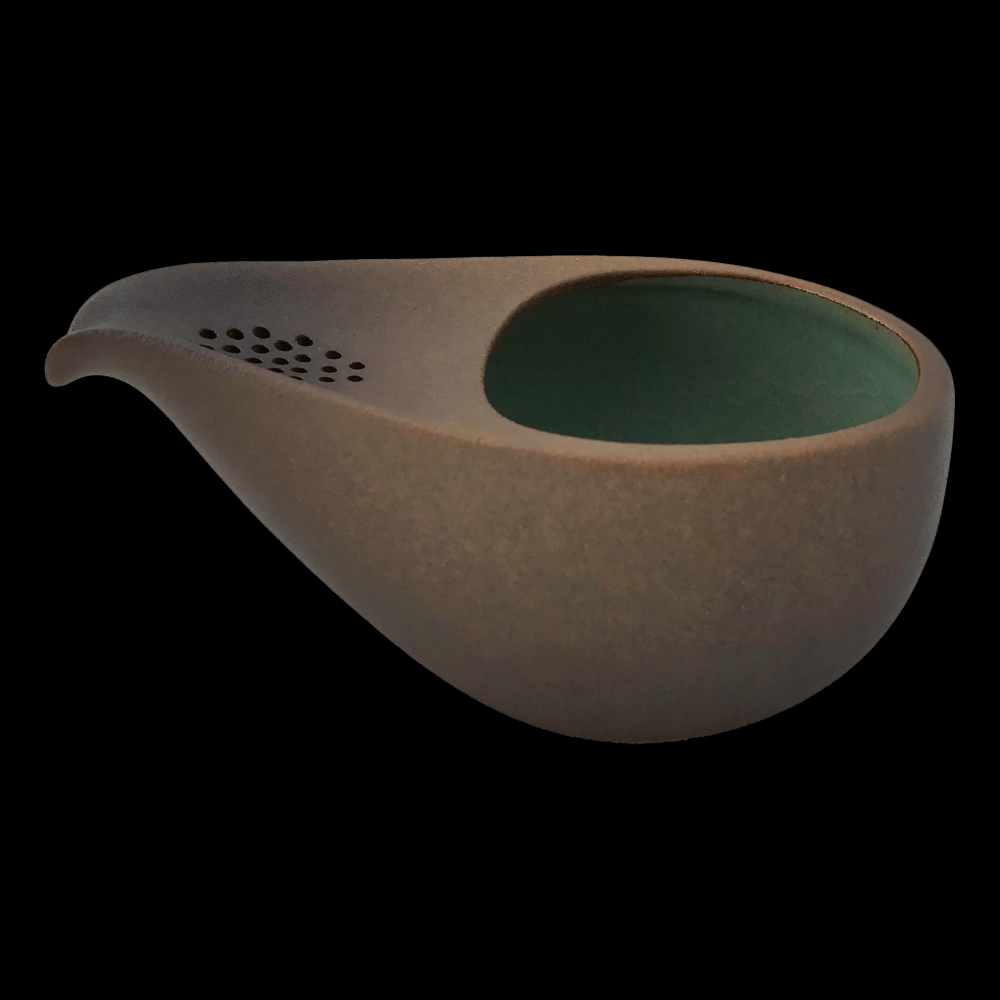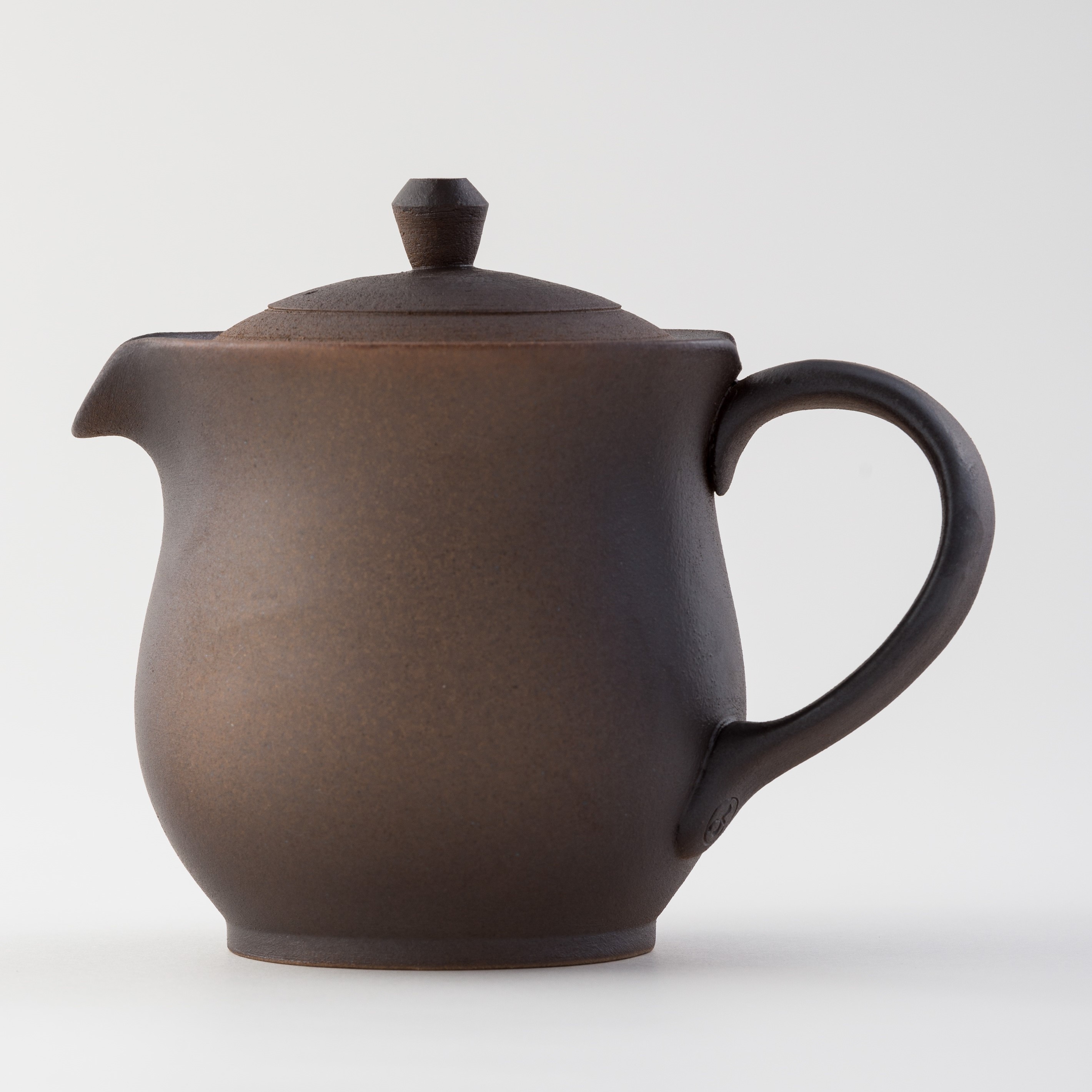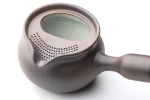
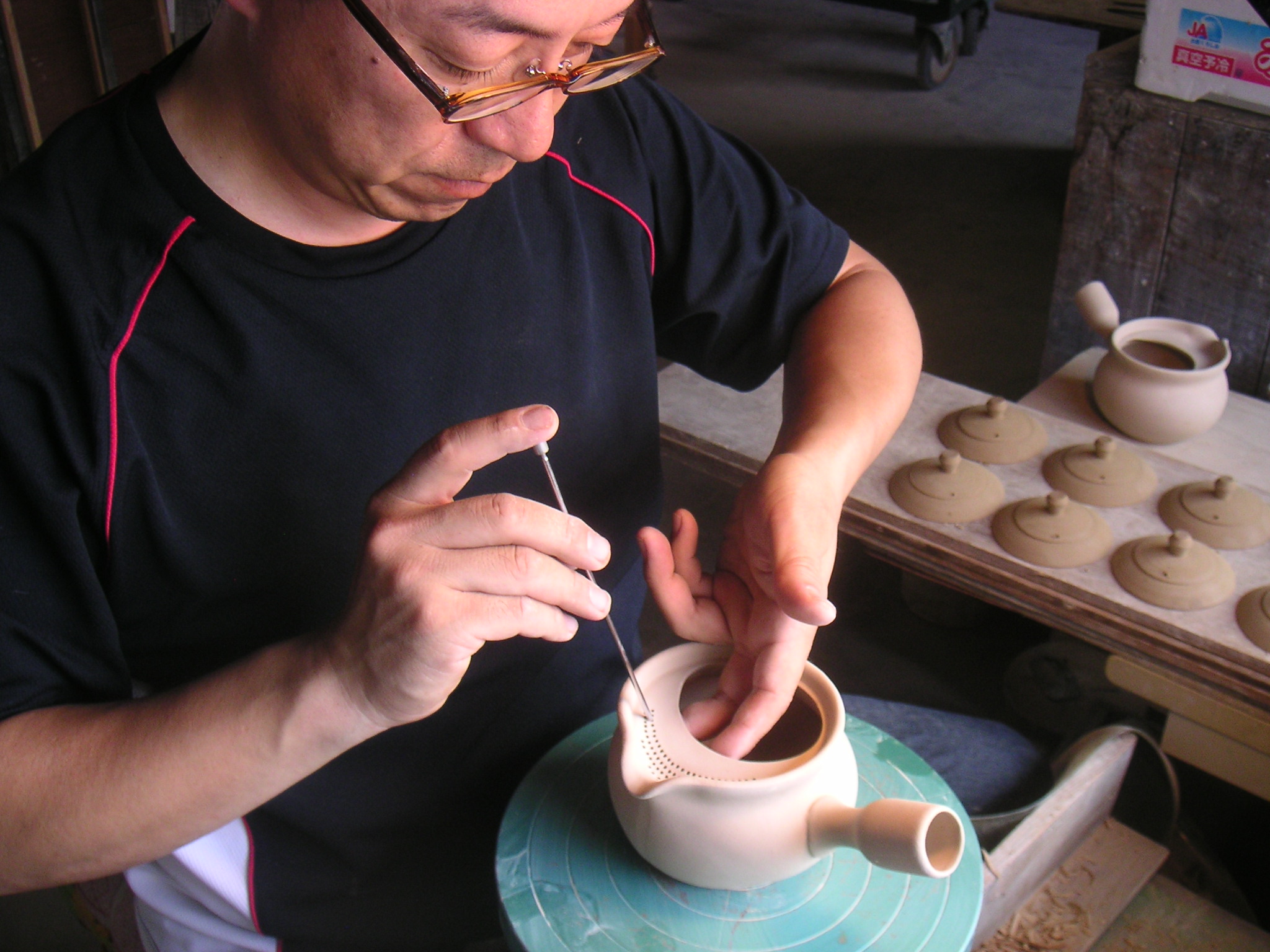
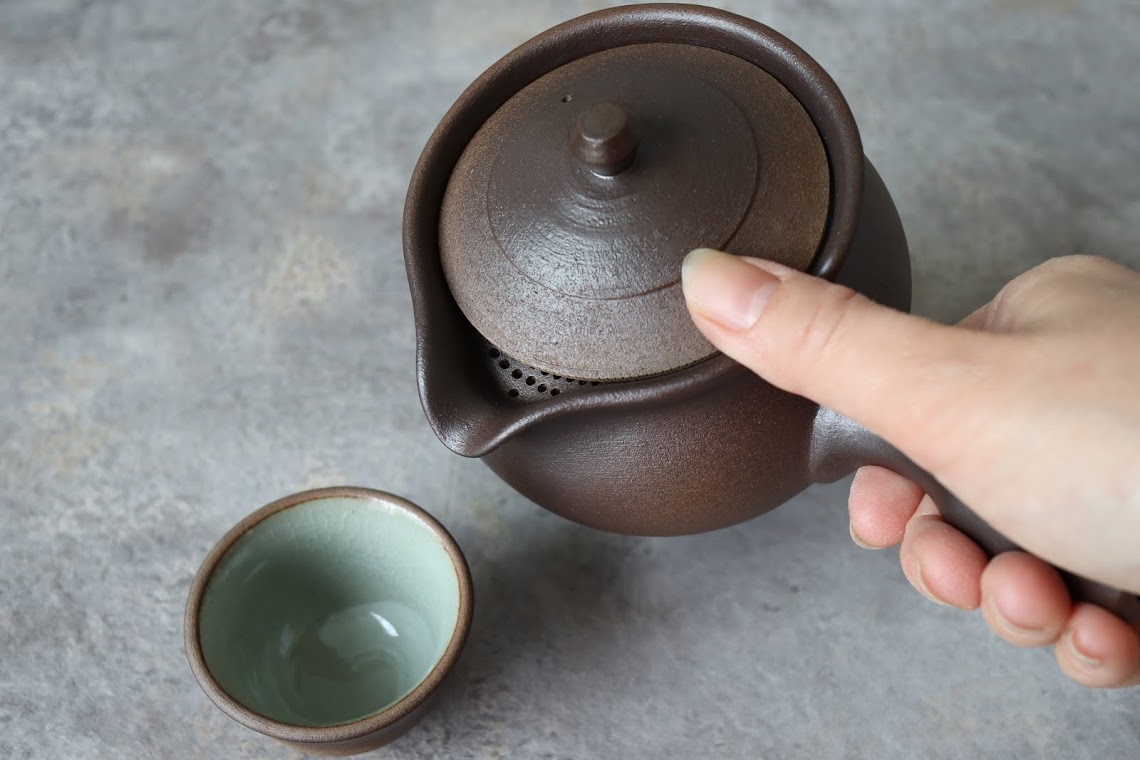
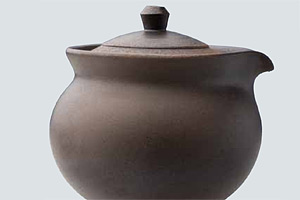
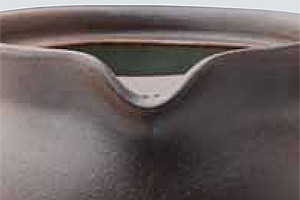
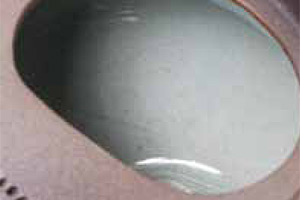
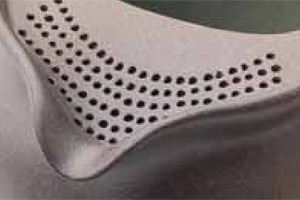
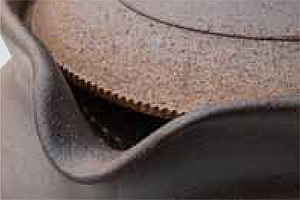
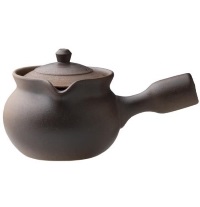



























This Banko Yaki kyusu combines the centuries-old tradition of kyusu making in Yokkaichi with modern demands on design and handling. Japanese kyusu side handle teapots are ideal for brewing green tea.
The tea leaves can unfold freely in the pot and are retained by an integrated strainer in front of the spout during brewing. The leaves remain in the pot and are then simply brewed again briefly with water for further infusions.
Special features.
At Fujiso Manufactory, the holes in the clay strainer in front of the beak-like spout are poked by hand. This skill is still mastered by only a few masters in Japan - there are only 3 artists left who make such sieves in Japan. Clay screens of this type are particularly well suited for slightly larger leaf material. These include medium-strong or only lightly steamed teas such as Gyokuro, Shincha Yakushima, Hojicha, Oolong and other specialties. In the case of intensely steamed tea (fukamushi cha), the fine leaves may get stuck in the holes.
The belly shape of the pot gives the tea room to unfold and the handle and spout are shaped so that the pot fits comfortably in the hand and the tea can be poured without dripping. The notches on the lid ensure a smooth flow when pouring by improving air exchange.
On the outside, the reddish-brown clay typical of the Banko-Yaki style is unglazed, while a light, pale green glaze has been applied to the inside. This glaze was specially developed to facilitate cleaning and to allow the aroma of the prepared teas to develop without external influences and not to settle in the porous clay. Thus, the pot can be used for changing teas with intense aroma, without it lingering on the next tea.
By the way, for the Tokyo Olympics, this Kyusu was exclusively selected as the official guest gift for the delegates!
Filling capacity
350ml, for 1-4 persons
The filling quantity of the pot should be chosen so that the tea can be completely distributed to the ready cup(s) and no water remains in the pot between infusions.
The filling quantities are measured to the rim - the actual amount in daily use is slightly smaller.
Deviations.
Please note that the shape, color and size of tea ceramics may vary slightly!
This is especially true for teapots, which are all at least partially handmade.
Cleaning
To clean the teapot after everyday use, simply tap the teapot against your palm to loosen the tea and shake it out. Rinse well with clear water, also through the strainer. If the strainer has become clogged after longer use, you will find instructions here on how to care for and clean your teapot - for undiminished tea enjoyment: Cleaning instructions
3 of 3 reviews
5 out of 5 stars
Login
9 March 2024 19:28
sehr schönes, edles Kännchen....macht mir sehr viel Freude!
sehr gut....werde mich demnächst wieder bei Keiko umschauen!0
15 January 2023 17:39
Sehr gutes Kyusu
Die sehr schöne und funktionale Teekanne lässt sich tropffrei ausgießen. Mein Exemplar kann ich inlk. Teeblätter mit max. 275ml Wasser befüllen. Das Tonsieb ist anders als die Innenseite der Kanne komplett unglasiert. Dadurch bekommt der Teeaufguss etwas Kontakt mit dem Banko-Yaki Ton, was ich positiv finde.
24 May 2022 13:26
Schickes Kännchen zur optimalen Teezubereitung
Qualitativ hochwertiges Kyusu. Das Kännchen ist überall sehr gut verarbeitet und hält genau das, was es verspricht. Tee kann super ausgegossen werden, ohne das Tee daneben läuft. Habe mir zusammen mit dem Kännchen, einen Gyokuro bestellt. Durch seinen gröberen Schnitt bleibt er super in dem Sieb hängen. Feiner geschnittener Tee kann man auch zubereiten, bleibt aber weniger gut in der Kanne zurück, was für mich aber kein Problem darstellt, da ich die aufgegossenen Teeblätter eh verzehre.
Dazu passt
Ähnliche Artikel
Not available
Ähnlich
Not available
Zubehör



